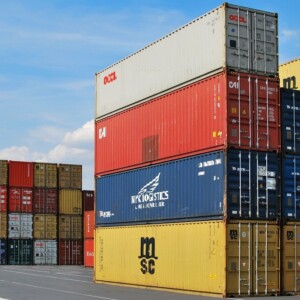Loading a shipping container isn’t rocket science, but it does take the right prep and a little know-how to avoid chaos. Done right, you’ll save money, protect your gear, and keep things moving smoothly from pickup to delivery. Let’s break it down into a step-by-step process you can actually follow (no shipping degree required).
Why Loading a Shipping Container the Right Way Actually Matters
Think of your shipping container like a puzzle. The goal? Fit everything in snugly, safely, and without wasting an inch—or breaking a single thing.
Done right, efficient loading can:
- Cut down shipping costs
- Keep your goods safe
- Help you stay compliant with shipping rules
It’s one of those behind-the-scenes things that can make or break your logistics game. Whether you’re new to shipping or doing this every week, dialing in your loading process is worth it.
The art of loading a shipping container efficiently maximizes space and protects your goods during transit. Efficient loading reduces shipping costs, prevents cargo damage, and ensures compliance with shipping regulations. Understanding and implementing these practices is essential in logistics and supply chain management.
Step-by-Step Guide on Preparing Goods for Loading
Phase 1: Plan Before You Stack
Before a single box goes in, you’ve got some groundwork to cover.
Know Your Container
All shipping containers are not created equal.
- Standard containers = 8’6” tall
- High-cube containers = 9’6” tall (great for bulky stuff)
Two terms you need to know:
- Tare weight: how much the empty container weighs
- Payload: the max amount of cargo you can safely load
A 20-footer handles around 55,115 lbs
A 40-footer? About 67,240 lbs
Know Your Cargo
This isn’t the time to just wing it. Get clear on what you’re loading:
- Create an itemized list with weights and dimensions
- Group things by size, fragility, and weight
- Flag anything unusual (hazardous materials, perishables, etc.)
It’s like packing for a trip, except the suitcase is the size of a garage.
Gather Your Gear
Don’t start loading without the right tools nearby. Here’s what we recommend:
- Load bars + cargo straps
- Dunnage bags (inflatable airbags for filling gaps)
- Bracing plywood or 2x4s
- Safety gear: gloves, boots, vests
- Pallet jack or forklift
- Bubble wrap + stretch film
Having this stuff ready will save you hours and a few headaches.
Create a Loading Game Plan
This is the part most people skip (and regret later). Sketch out:
- Where each item will go
- How to balance the load evenly
- Any empty spaces that’ll need bracing or airbags
Even a rough diagram helps more than you’d think.
Packaging Tips to Prevent Damage
This is where you set yourself up for success. These small moves make a big difference once the loading starts.
Packaging Tips to Avoid Damage
Let’s talk packaging. Not all boxes are created equal.
- Use tough stuff: Cheap boxes aren’t worth the headache. Go with durable shipping-grade materials.
- Stack smart: Heavy on the bottom, light on top. It keeps things from toppling over mid-transit.
- Heavy stuff = wall buddies: Tuck items like appliances or mattresses against the walls.
- Wrap it up: Fragile items? Go all-in on bubble wrap or packing peanuts. Nothing should jiggle inside the box.
Maximize Container Space (Without Compromising Safety)
The goal is to use every inch—but not at the cost of stability.
- Stack from floor to ceiling if you can.
- Fill in any weird gaps with soft filler or air bags.
- Avoid loose spaces that could shift during transit.
Optimizing Space Within the Container
Once your cargo’s in, keeping it locked in place is the name of the game.
Stack With Intention
- Go vertical when it makes sense—just don’t let it turn into a leaning tower of boxes.
- Stack evenly, keep the center of gravity low, and avoid placing anything fragile under heavier stuff.
Use Load-Securing Materials Like a Pro
Here’s what to have on hand:
- Load bars + straps: Keep things from sliding
- Plywood bracing: Follows IPCC standards and gives your load extra support
- Dunnage bags: Fill the in-between gaps and absorb shock during transit
Shipping Hazardous Goods?
- Follow IMDG regulations
- Separate incompatible items
- Make sure nothing leaks, spills, or causes a surprise in transit
Phase 2: Load Like a Pro
You’re geared up. You’ve got a plan. Time to fill that box right.
Start with a Container Check
Before you throw in the first item:
- Look for holes, rust, or puddles
- Check that the floor is dry and clean
- Make sure the lashing points and locks are solid
Choose Your Loading Style
Palletized Loading
- Great for warehouses or bulk goods
- Use a “brick pattern” to lock pallets in place
- Leave a little breathing room around the edges
Floor Loading
- Better for large items like furniture
- Put heavy stuff low and along the walls
- Lay down plywood for extra support if needed
Nail the Weight Distribution
This part’s big. Uneven loading = big trouble.
- Heavier items should go in first
- Center the weight side-to-side and front-to-back
- No “front-heavy” setups that throw off the trailer
Secure Everything
Once things are in, it’s time to lock it down.
- Use cargo straps at the lashing points
- Add dunnage bags between loose items
- Brace stacks with plywood or wood beams
- Build a final wall near the doors (so nothing falls out when you open it)
This extra step is your insurance policy.
How to Load a Shipping Container On a Trailer
- Make sure the container is secured tightly
- Never exceed the trailer’s weight rating
- Lock everything down to avoid cargo shifting mid-drive
How to Load a Shipping Container On a Flatbed

- Go heavy-duty with straps and corner protection
- Double-check height limits
- Stay mindful of weight distribution so nothing tips or leans on the road
Phase 3: Wrap It Up the Right Way
Don’t leave things hanging. These final steps matter.
Do a Final Walkthrough
- Check that everything matches your load plan
- Pull on straps to double-check they’re tight
- Look for anything loose near the doors
Seal the Container
Use a bolt seal on the right-hand door and record the seal number. That number goes on your Bill of Lading (more on that next).
This step helps prevent tampering and keeps customs happy.
Handle Your Paperwork
No paperwork = no shipping. Make sure you’ve got:
- Bill of Lading (B/L) – the most important doc in the shipment
- Packing list – detailed item list with weights and dimensions
- Customs forms – especially if you’re shipping overseas
How to Load A Shipping Container Safely
Safety isn’t just a buzzword. It’s the thing that keeps you injury-free and your cargo intact.
Watch Your Weight Distribution
This is critical. Unbalanced loads cause tipping, trailer damage, and shipping disasters.
- Even weight = happy trailer
- Heaviest stuff goes down low, center of the container
- Double-check your weight doesn’t exceed container limits
💡 Quick reminder:
- 20-ft container = max ~55,000 lbs
- 40-ft container = max ~67,000 lbs
(And yes—overloading will bite you later.)
Managing the Actual Loading Process
Whether it’s your crew or a hired hand, make sure the process is smooth from the first box to the last strap.
Use the Right Equipment
- Forklifts and pallet jacks make life easier
- Conveyors help when you’ve got lots of smaller items
- Double-check everything’s working before you start
Consider Hiring the Pros
Have a complicated load? Time crunch? Just want peace of mind?
Sometimes, bringing in a professional crew is the smarter call. They’ll knock it out fast and secure.
Conclusion
The best way to load a shipping container? Start with a plan, stick to the process, and don’t cut corners. It’s not just about fitting stuff in, it’s about keeping it safe, balanced, and secure until it reaches its destination. At SteelBox Shipping Containers, we don’t just drop off a box and call it a day. We help you load smarter, seal it right, and get it shipped with confidence. Request a quote today or give us a call. Whether it’s your first load or your fiftieth, we’ve got your back.





